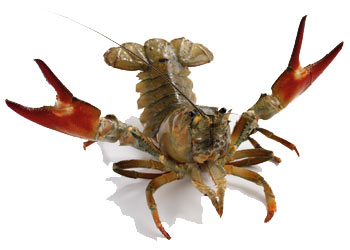 Earlier this year (May 2017 last), a large numbers of freshwater crayfish were reported as dead, on a stretch of the River Suir, downstream from Clonmel, in South Co. Tipperary.
Earlier this year (May 2017 last), a large numbers of freshwater crayfish were reported as dead, on a stretch of the River Suir, downstream from Clonmel, in South Co. Tipperary.
Analysis, then carried out confirmed that the cause of this crayfish mortality was a water multicellular fungus or mold known as ‘Crayfish Plague’. The disease, which arrived possibly through imported crayfish from North America, or in ships ballast water, has left all agencies including the National Parks and Wildlife Service (NPWS); Inland Fisheries Ireland; and Tipperary County Council, working to contain the outbreak.
Alas, yet another outbreak has been now been confirmed, this time on the Lorrha River, in North Tipperary. Dead freshwater crayfish have been located and DNA analysis confirm that the cause of death is again Crayfish Plague, according to the National Parks and Wildlife Service.
The disease was first discovered here in Ireland in 1987, for the first time; however, based on known current information and research, some 100% mortality of this crayfish population is expected. This situation in turn will create major consequences for the future ecology of this stretch of the Lorrha River, since no resistance to this disease, as yet to date, has been discovered in relation to the native European crayfish population.
All person entering Irish rivers, for any reason, are now once again being urged to observe the practice of ‘Check, Clean and Dry’, when leaving or entering fresh water areas. Wet gear, including boats, waterproof clothing and other associated equipment used, should be checked for mud, silt and plant material, before disinfecting or washing; using boiling water, and before allowing a drying period of at least 24 hours. Like ballast water, ensure also that water introduced internally in boats and other water craft, are also treated. This procedure is essential in the prevention of the spread of Crayfish Plague to other, as yet, unaffected fresh water areas.

Leave a Reply